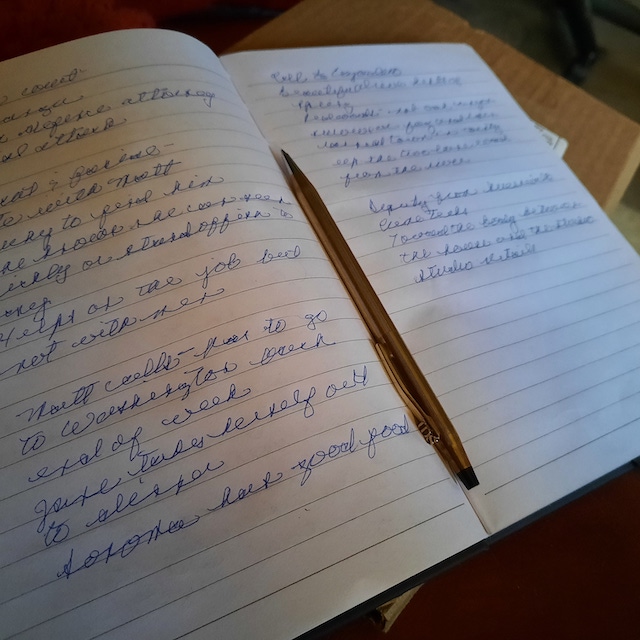Mystery Writing: A Guide to the Four-Act Structure

Crafting a mystery novel, you might navigate through a maze of plot twists, character secrets, and red herrings. Creating a story that grips your readers from the first page to the last is fraught with challenges, yet immensely rewarding. At the heart of this adventure is a tool as critical as your detective’s magnifying glass: the four-act structure.
Far from being a rigid formula, this structure serves as your guide through the intricate landscape of mystery writing, ensuring that every clue, every suspicion, and every revelation leads inexorably to the outcome that will leave your readers breathless.
Following the four-act structure is like charting a map before a voyage; it allows you to balance pacing, manage tension, and craft a narrative that compels your reader to turn the page. While the thought of dissecting your narrative into four distinct parts might seem daunting at first, understanding the unique role and opportunities each act offers transforms this process into an exhilarating challenge.
Whether you’re laying the groundwork for an intricate detective story or the subtleties of psychological suspense, the insights that follow will prove indispensable on your journey.
The Four-Act Structure
At its core, the four-act structure is more than just a template; it’s a rhythm that mirrors the ebb and flow of human curiosity and engagement. This structure is split into distinct parts, each serving a specific purpose in the tapestry of your mystery. Understanding each act will not only clarify their roles but also illuminate how they interlock to create a compelling narrative.
The Four Acts
Unlike the traditional three-act structure, which consists of a beginning, middle, and end, the four-act structure introduces a critical pivot in the narrative’s heart. This pivot – often a deepening of the mystery or a significant twist – is what sets the four-act structure apart, ensuring that your story maintains momentum and keeps readers invested.
1. Act One: Setup and Inciting Incident – This is where you introduce your protagonist, the setting, and the everyday world in which they live. The calm before the storm, so to speak. Then, you disrupt this world with the inciting incident: the mystery that catalyzes the story.
2. Act Two: The Investigation Begins – With the stage set, your protagonist (and the reader) steps into the labyrinth of the investigation. Here, initial clues are found, suspects introduced, and the groundwork of the mystery is laid out. This act is characterized by a growing number of questions.
3. Act Three: The Deepening Mystery – Just when it seems the investigation might be gaining ground, everything deepens. New layers of the mystery are unveiled, obstacles are introduced, and the protagonist is tested. This act is crucial for ramping up tension and setting the stage for the climax.
4. Act Four: Climax and Resolution – All roads lead to this moment. The climax is where the final pieces click into place, often in a surprising twist. Following this peak, the resolution allows for a reflection on the journey, providing answers and tying up loose ends.
Why the Four-Act Structure Works for Mysteries
Mystery readers are detectives in their own right, seeking not just the thrill of the chase but the satisfaction of piecing together a puzzle. The four-act structure caters to this by pacing the distribution of information and tension perfectly. It enables you, the storyteller, to lead your audience on a carefully thought-out journey filled with intrigue, tension, and, in the end, revelation.
This structure is particularly effective in mysteries because it underscores the investigation’s dynamism. Instead of a straightforward path, you lead your readers through a maze with twists, turns, and false starts that challenge their assumptions and keep them engaged. It mirrors the detective’s journey – a pathway fraught with complications, requiring adaptive thinking and resilience.
Adding a second ‘middle’ act allows a deeper exploration of the narrative and characters. It provides space to delve into subplots, flesh out characters, and build a more immersive world – all elements that enrich the mystery and make the resolution more satisfying.
Using the four-act structure, you’re not confining your creativity; you’re channeling it. You’re creating a scaffold that supports your story as it grows, ensuring that every element serves the narrative’s heart: the mystery itself.
Your role is much like that of the mastermind behind a magic trick; while the showmanship distracts the audience (your readers), it’s the structure behind the scenes that ensures the trick’s success.
Act One: Setup and Inciting Incident
Your mystery novel begins here, in the crucial first act where you set the stage for intrigue and engage your reader with the promise of an unfolding enigma. The effectiveness of what follows hinges on how well you lay the groundwork in this opening act. Here’s how to navigate through these initial steps, ensuring you captivate your audience from the outset.
Establish the ‘Normal World’
Your first task is to introduce the ‘normal world’ of your protagonist. This isn’t merely about setting the scene or outlining the backdrop of your story; it’s about providing a contrast to the chaos and mystery that’s about to unfold. In these early pages, you give your readers a glimpse into the life of your protagonist—be it a seasoned detective, an amateur sleuth, or an ordinary person caught in an extraordinary situation. Use this opportunity to make your readers care about your protagonist by showcasing their attributes, flaws, and motivations within the context of their everyday life.
Introduce Key Characters
Equally important in Act One is the introduction of other key characters who will play pivotal roles in your story. This includes potential suspects, allies of the protagonist, and characters who add depth and complexity to the narrative. Introductions should be organic, showing characters in their elements and hinting at how their paths may intersect with the unfolding mystery. Remember, first impressions matter. Each character introduction is an opportunity to plant seeds of intrigue and establish dynamics that enrich the narrative tapestry of your mystery.
The Inciting Incident: Sparking the Mystery
At the heart of Act One lies the inciting incident—the catalyst that propels your protagonist (and the story) into the unknown. This is when the ‘normal’ is disrupted by an event or discovery that ignites the mystery. It could be a murder, a theft, a disappearance, or any incident that poses a question demanding to be answered.
This incident must be compelling, leaving both your protagonist and your readers with an irresistible urge to uncover the truth. The inciting incident should also reflect the stakes involved, setting the tone for the urgency and gravity of the investigation to come. This moment is your first major hook, a promise of the complexities, twists, and revelations that await.
Build the Foundation of the Mystery
This act should close with a sense of momentum, as your protagonist takes the first steps into the investigation, firmly committing to the path that lies ahead. Act Two, the investigation and the true heart of your story, begins when they decide to take on the mystery, whether out of duty, curiosity, or personal stakes.
Act One of your mystery novel is about setting the stage and lighting the fuse. By carefully crafting a compelling ‘normal world,’ introducing key characters with depth and potential, triggering the narrative with a captivating inciting incident, and laying the initial threads of the mystery, you as the author ensure that your readers are locked in for the journey. It’s a blueprint for engagement, skillfully designed to draw your audience into the maze of mystery you’re about to navigate together. As you transition into Act Two, the focus shifts to deepening the intrigue, expanding the investigation, and pulling your readers ever further into the heart of the mystery.
Act Two: The Investigation Begins
In Act Two, your mystery deepens, branching out into intricate plot threads and weaving a web of intrigue that captivates your readers. This pivotal act marks the true beginning of the investigation, setting your protagonist and, by extension, your readers, on a path that is fraught with uncertainty, dotted with clues, and shadowed by suspects. Here’s how to navigate the complexities of Act Two, ensuring that the heart of your mystery beats with tension and intrigue.
Embark on the Investigation
With the stage set and the inciting incident behind them, your protagonist now steps firmly into the unknown. The investigation begins in earnest, driven by the questions raised in Act One. This is where the detective work starts to take shape—be it through formal police procedures, amateur sleuthing, or something in between.
The early part of Act Two should focus on the initial gathering of information. This may involve interviewing witnesses, examining the crime scene, or following up on leads. It’s essential here to balance revealing too much too soon and not providing enough substance to keep the narrative moving. Every clue, no matter how small, should serve the dual purpose of shedding light on the mystery while potentially opening up new avenues of inquiry.
Introduce Clues, Suspects, and Red Herrings
The backbone of Act Two lies in the introduction and exploration of clues, suspects, and the ever-misleading red herrings. Clues are the breadcrumbs leading your protagonist (and your readers) toward the truth, or at times, further from it. Distribute them with precision, keeping the investigation challenging but not impossible.
Suspects add a human element to the mystery. Each suspect should have motives, opportunities, and secrets, making them viable contenders in the eyes of the protagonist and the readers. Developing well-rounded suspects adds depth to your story, enriching the narrative with interpersonal dynamics and moral ambiguities.
Red herrings are your tools for misdirection. Carefully placed incorrect clues or misleading paths can add layers to your mystery, heightening the suspense and making the eventual revelation all the more satisfying. However, use them judiciously; too many red herrings can lead to frustration rather than intrigue.
Develop Subplots and Characters
While the central narrative of Act Two revolves around the unfolding investigation, this act also provides an ideal backdrop for developing subplots and delving deeper into character arcs. These subplots offer breathers from the main investigation, lend insight into your protagonist’s character, or introduce new themes and challenges that parallel or intersect with the main mystery.
Character development is crucial in Act Two. As your protagonist navigates the investigation, their responses to challenges, interactions with other characters, and personal growth add layers to the narrative. This act should test them, revealing strengths and vulnerabilities that endear them to your readers.
Build Suspense and Reader Engagement
The key to a successful Act Two is maintaining a sense of momentum. Pacing is crucial; your narrative should ebb and flow, with moments of intense action or revelation balanced by quieter, reflective instances that allow your readers to catch their breath and ponder the mystery alongside the protagonist.
Engage your readers by inviting them to solve the mystery with your protagonist. Plant clues in plain sight, offer speculative paths and encourage them to form theories. This interactive aspect of mystery writing turns passive readers into active participants, deeply invested in the narrative outcome.
Act Two is the engine room of your mystery novel, propelling the narrative forward through a carefully constructed blend of investigation, character development, and strategic misdirection. It’s where your story gains depth and complexity, engaging your readers’ intellect and emotions. By balancing the revelation of clues with the deepening of the mystery, introducing compelling suspects, and effectively using red herrings, you set the stage for the escalating tension and revelations to come in Act Three. Mastery of Act Two lies in crafting a journey that’s as enthralling in its pursuit of the truth as it is in the unveiling of the mystery itself.
Act Three: The Deepening Mystery
Act Three is where the heart of your mystery story beats the loudest, a critical juncture where intrigue intensifies, certainties blur, and your protagonist faces their greatest trials yet. The narrative arc bends towards complexity, presenting obstacles that test the resolve of your characters and the patience of your readers—in the best way possible. Here’s how to navigate this pivotal act, ensuring that the foundations laid in the first half of your story bear the weight of the twists to come.
Escalate the Stakes
An escalation that raises the stakes dramatically marks the beginning of Act Three. This could manifest as a personal threat to the protagonist, a ticking clock element, or a new murder or crime that complicates the existing investigation. The key is to make the escalation feel organic and inevitable, a natural progression of the narrative that heightens the tension and stakes believably.
This elevation in stakes serves a dual purpose: it challenges your protagonist, forcing them to push beyond their limits, and it reinvigorates the reader’s engagement with the story. The urgency introduced here keeps the pages turning as the investigation takes on a new, more desperate pace.
Introduce New Layers and Complications
As the investigation deepens, so too should the complexity of the mystery. Act Three is the ideal place to introduce new evidence that contradicts earlier assumptions, unveil secrets that shed new light on suspects, or reveal connections previously overlooked. Each new layer adds depth to the mystery, making the path to resolution less predictable and more engaging.
Complications in this act often come in the form of obstacles that hinder the investigation. These can be external, such as a key witness becoming uncooperative or evidence being destroyed, or internal, such as the protagonist grappling with their doubts or facing moral dilemmas. These complications ensure that the journey to the truth is not straightforward, mirroring the complexities of real-life investigations and human psychology.
Twists and Turns
Act Three is where your story’s twists and turns should have the most impact. These are the moments that challenge the reader’s expectations and perhaps even the protagonist’s worldview. A well-placed twist may recontextualize earlier events and clues, giving them new significance and propelling the story toward its climax in an unexpected direction.
The art of the twist lies in its setup; it should be surprising yet, upon reflection, feel inevitable within the story’s logic. This act’s twists not only serve to shock but also to deepen the narrative, adding layers of meaning and emotional resonance that enrich the overall story.
Pacing and Tension Management
With the mystery deepening and the stakes escalating, managing pacing and tension becomes crucial in Act Three. The narrative should maintain a balance between rapid developments and moments of introspection, allowing both the protagonist and the reader to catch their breath and process the implications of new revelations.
Dynamic pacing helps sustain reader interest and investment, ensuring that the suspense does not wane as the story approaches its climax. The protagonist’s internal conflicts, the urgency of the investigation, and the interplay between hope and despair modulate the tension as solutions seem simultaneously within reach and just out of grasp.
Act Three is the crucible through which the metal of your mystery is tested and refined. By escalating the stakes, introducing new layers and complications, executing impactful twists, and managing pacing and tension, you craft a narrative that is both compelling and complex. This act is a testament to the narrative skill of weaving uncertainty and suspense into a tapestry that, while intricate, leads inevitably toward the story’s climax and resolution in Act Four. Here, all paths converge, secrets unravel, and your protagonist faces the ultimate test, bringing the mystery to a satisfying conclusion. The power of Act Three lies in its ability to deepen the mystery to such an extent that the resolution becomes an insatiable need for both protagonist and reader alike.
Act Four: Climax and Resolution
Act Four emerges as the final, decisive act where all questions are answered, secrets are unveiled, and the story reaches its zenith of tension and revelation. This is where the careful setup and intricacies of the preceding acts converge in a climax that not only satisfies the intellectual curiosity of your readers but also delivers a profound emotional payoff. Here’s how to craft a fulfilling Act Four, ensuring that the resolution of your mystery leaves a lasting impression.
Build Toward the Climax
The initial phase of Act Four involves steering all narrative elements towards the climax. This means drawing together the various plot threads and clues laid out in the previous acts, increasing the sense of inevitability as the story propels towards its conclusion. Now that the journey has tested and transformed your protagonist, it is up to them to muster all of their strength and resolve for the last push.
At this juncture, pacing intensifies, mirroring the protagonist’s heightened sense of purpose. Every scene, dialogue, and piece of evidence now carries the weight of impending resolution, ensuring that the narrative momentum built up to this point does not falter.
The Climax: The Final Piece of the Puzzle Revealed
The climax of a mystery novel is the moment your readers have been eagerly awaiting—the unveiling of the truth behind the mystery. This pivotal moment should be both surprising and satisfying, answering the central question of the narrative in a way that feels both ingenious and inevitable.
Crafting a compelling climax involves more than just revealing “whodunit”; it’s about delivering on the promise of a logical and emotionally resonant resolution. The protagonist’s actions and decisions here are crucial, as they should be the catalyst that brings the mystery to light, reflecting their growth and the journey undertaken. This is their moment to shine, applying their skills, intellect, and insights gathered throughout the story to solve the puzzle.
The Resolution: Tying Up Loose Ends
Following the climax, the resolution serves to tie up any remaining loose ends, providing closure not just for the protagonist but for the reader as well. This includes addressing the fates of the other characters, particularly those who were suspects, allies, or significant to the narrative in other ways.
The resolution also offers a space to reflect on the repercussions of the mystery’s resolution—how it has affected the community, the protagonist, and the relationships between the characters. It’s an opportunity to underscore the themes of your story and to leave your readers with a deeper understanding or message to ponder.
Consider giving a glimpse into the “new normal” for your protagonist and the world of your story post-mystery. This not only provides a sense of continuity beyond the pages of your book but also leaves the door open for potential future stories.
Act Four is where you showcase your mastery as a mystery writer. By delivering a climax that is both unexpected and wholly satisfying, you fulfill the implicit contract made with your readers from the very first page.
The resolution then allows you to tie up narrative loose ends and leave your audience with a lasting impression of your story’s deeper meanings and themes. Crafting a well-executed Act Four is a delicate balance of pacing, revelation, and emotional resonance, ensuring that the journey you’ve taken your readers on is memorable, satisfying, and complete. A great mystery doesn’t just puzzle the intellect; it touches the heart and lingers in the reader’s mind long after the last page is turned.
Tips for Writing a Mystery Using the Four-Act Structure
With the right approach and understanding, creating a mystery story becomes a manageable and deeply rewarding creative process. Here are some essential tips to guide you through writing your mystery, ensuring that each act serves its purpose and contributes to a cohesive, engaging, and suspenseful narrative.
Planning and Outlining
1. Start with a Blueprint: Before you dive into writing, take the time to outline the key events of each act. Know the beginning (Act One), the development of the investigation (Act Two), the complications and twists (Act Three), and the resolution (Act Four). An outline serves as a roadmap, guiding your narrative and ensuring that you maintain direction and focus.
2. Understand Your Ending: Clearly understand how your mystery resolves. Knowing the solution to your mystery from the start allows you to plant clues and red herrings effectively throughout your narrative. It also helps in maintaining the logical progression of the investigation.
Weaving Clues and Red Herrings
1. Strategic Placement: Distribute clues and red herrings throughout your story in a way that feels organic and engaging. Ensure that clues are not too obvious but also not so obscure that the resolution feels unearned. Red herrings should mislead but not frustrate your readers. Finding the right balance is key to maintaining suspense and engagement.
2. Foreshadowing: Use foreshadowing to hint at future revelations and twists. This technique not only adds depth to your narrative but also makes the final payoff more satisfying for your readers, as they can see the groundwork laid for the resolution from the beginning.
Character Development
1. Dynamic Characters: Your protagonist, antagonist, and supporting characters should be dynamic and multifaceted. Characters should develop and change throughout the narrative, influenced by the events of the investigation. Character arcs are as crucial as the plot in keeping your readers engaged.
2. Motivations and Backstories: Each character, especially your suspects, should have clear motivations and backstories. This not only adds depth to your characters but also creates a more intricate and believable mystery for your protagonist to unravel.
The Significance of Setting
1. Atmosphere and Mood: Use your setting to build atmosphere and mood. A well-described setting can add tension, foreshadow events, and enhance the overall sense of mystery. Think of the setting as an additional character that influences the mood and progress of the story.
2. Clues and Settings: Consider how your settings can serve as a vehicle for clues or red herrings. An atmospheric location can be the perfect backdrop for crucial discoveries or misleading information, adding layers to your narrative.
When crafting a mystery novel with the four-act structure, it is necessary to carefully choreograph the intricate dance of plot, character, and setting to create a compelling narrative. By planning and outlining your story, strategically placing clues and red herrings, developing dynamic characters, and leveraging setting to enhance mood and atmosphere, you set the stage for a mystery that captivates and satisfies your readers.
The heart of a great mystery lies not just in the puzzle itself but in the journey to its solution—a journey that should be as engaging and fulfilling for the writer as it is for the reader. With these tips and a clear vision of your narrative structure, you’re well-equipped to embark on the rewarding adventure of mystery writing.
Crafting a mystery novel through the lens of the four-act structure is both a meticulous and creative process, blending the art of storytelling with the intricacies of mystery and suspense. By dividing your narrative into four distinct acts—each with its purpose, challenges, and opportunities—you create a scaffolding that supports and enhances your storytelling.
In Act One, you lay the foundation, introducing the world, characters, and the inciting incident that propels the mystery forward. Act Two deepens the investigation, weaving a web of clues, suspects, and red herrings, engaging your readers’ minds and inviting them into the detective process. Act Three escalates tensions, complicating the mystery and testing your protagonist, setting the stage for the dramatic revelations to come. Finally, Act Four delivers the climax and resolution, tying together the narrative threads in a satisfying conclusion that resolves the mystery and leaves a lasting impact on your readers.
The strength of a mystery lies in its ability to maintain suspense, provoke thought, and ultimately deliver a resolution that feels both surprising and inevitable. The four-act structure is a powerful tool for achieving this, providing a framework that balances pacing, character development, and plot progression.
Let the four-act structure guide your storytelling, allowing you to craft mysteries that intrigue, engage, and satisfy your readers. Embrace the complexity of plotting, the depth of character, and the atmospheres of your settings. Above all, enjoy the process of creation, knowing that the mysteries you weave have the power to captivate and entertain.
Unlock the secrets to crafting a compelling mystery that keeps readers on the edge of their seats. Zara Altair’s 12-Session Coaching Program, “Write A Killer Mystery,” to embark on a transformative journey from initial concept to polished manuscript. This program offers personalized guidance, practical techniques, and the support you need to bring your mystery story to life. Sign up now and start writing the mystery novel you’ve always dreamed of!
Photo by Kelly Sikkema on Unsplash






